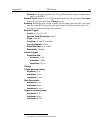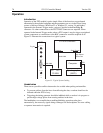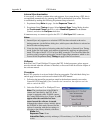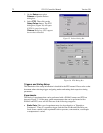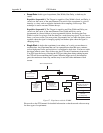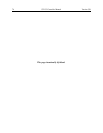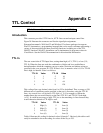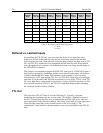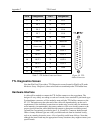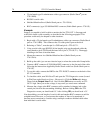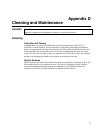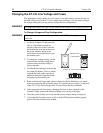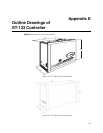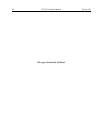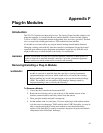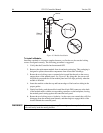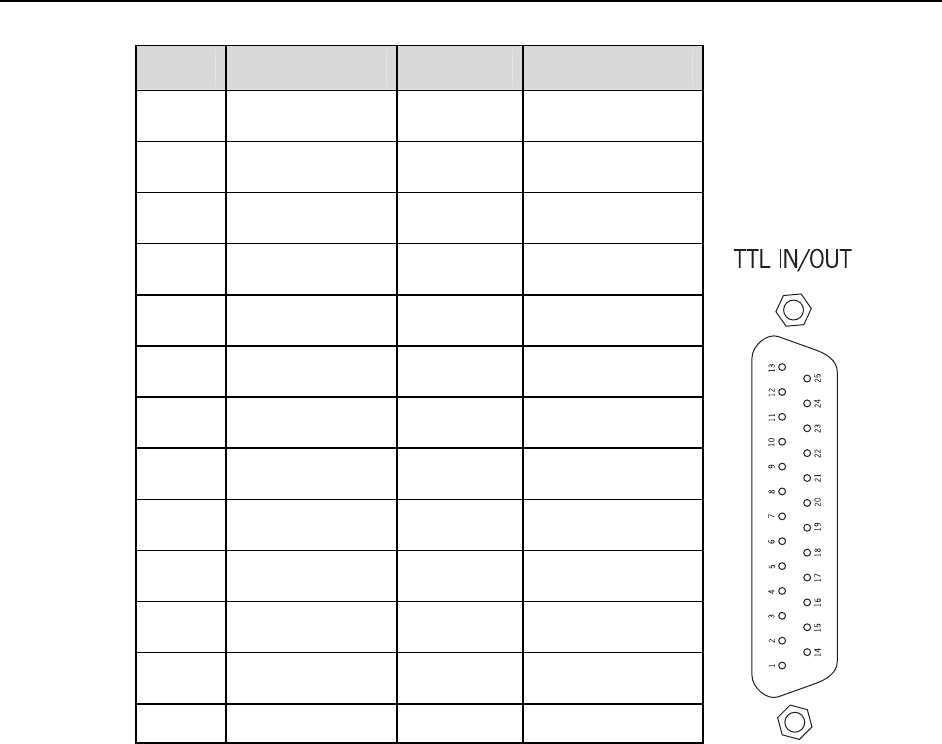
Appendix C TTL Control 77
Pin # Assignment Pin # Assignment
1 IN 1 14 IN 2
2 IN 3 15 IN 4
3 IN 5 16 IN 6
4 IN 7 17 IN 8
5 GND 18 GND
6 EN/CLK 19 Reserved
7 (future use) 20 GND
8 GND 21 OUT 2
9 OUT 1 22 OUT 4
10 OUT 3 23 OUT 6
11 OUT 5 24 OUT 8
12 OUT 7 25 GND
13 Reserved
Table 7. TTL In/Out Connector Pinout Figure 38. TTL
In/Out Connector
TTL Diagnostics Screen
Note that WinView/32 provides a TTL Diagnostics screen (located in WinView/32 under
Hardware Setup - Diagnostics) that can be used to test and analyze the TTL In/Out lines.
Hardware Interface
A cable will be needed to connect the TTL In/Out connector to the experiment. The
design will vary widely according to each user’s needs, but a standard 25-pin female type
D-subminiature connector will be needed to mate with the TTL In/Out connector at the
ST-133. The hardware at the other end of the cable will depend entirely on the user’s
requirements. If the individual connections are made using coaxial cable for maximum
noise immunity (recommended), the center conductor of the coax should connect to the
proper signal pin and the cable shield should connect to the nearest available ground
(grounds are conveniently provided at pins 5, 8, 18 and 20). Connector hardware and
cables of many different types are widely available and can often be obtained locally,
such as at a nearby electronics store. A list of possibly useful items follows. Note that,
although the items listed may be appropriate in many situations, they might not meet your
specific needs.



